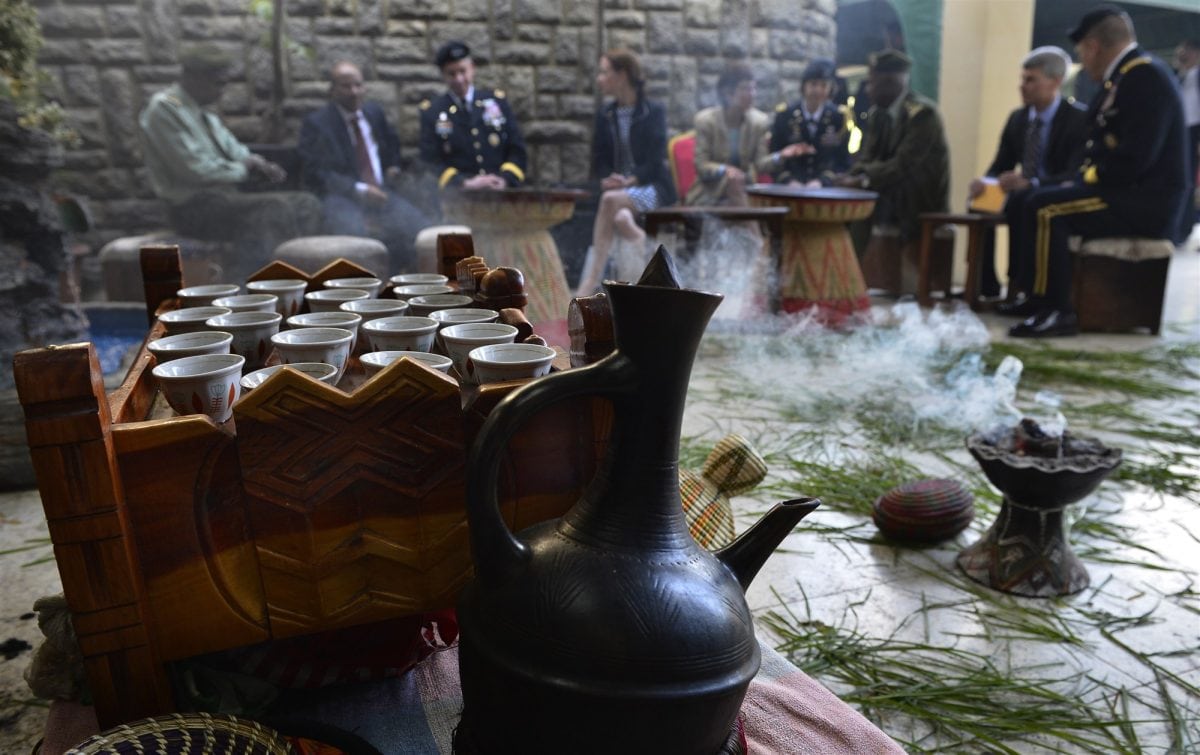
By Professor Ann Fitz-Gerald
Ethiopia’s ruling EPRDF coalition is facing its biggest governance crisis since its rise to power in 1991. With last week’s resignation of Prime Minister Hailemariam Desalegn many are watching and waiting to see who from the EPRDF’s four major ethnic-based parties will be taking over as Party leader.
Depending on how the Ethiopian Government manages this Party matter, the country could be heading for widespread disturbance. Unrest could spill over into an already volatile region into which Ethiopia has exerted regional leadership and injected stability over the past decade. Yesterday’s ‘defiance protests’ in cities like Gondar and elsewhere, where businesses and government organisations ceased operating, are further signs of this.
The background to the current crisis has been brewing since the anti-Government protests began in Oromia in 2015.
These protests continued in 2016, and spread into the northern regional state of Amhara later that year. Many involved in the protests were detained under the country’s anti-terrorist proclamation which, unlike other national counterterrorism policies, takes a broad interpretation to anything seen as inciting disruptions to peace.
Following a ten-month imposed state of emergency in 2016 and 2017, both the TPLF (Tigrayan Peoples Liberation Front and one of four parties of the EPRDF) and the governing EPRDF itself acknowledged failures in leadership and overall performance. They saw the Government’s inability to progress reforms as the root causes of the instability and loss of life experienced since 2015.
The Government’s release of thousands of ‘political prisoners’ including one of the main opposition leaders, Dr. Merera Gudina, was seen as a sign of weakness by some and gesture politics by others. Following his release, the huge show of support demonstrated towards Dr. Merera, combined with the rising popularity of the current leadership cadre of OPDO, suggests that the TPLF’s dominance within the EPRDF coalition may have come to an end.
One could argue that the Government’s acknowledgement of failure, and its commitment to opening up political space for more inclusive national dialogue, could have been a promising start to the New Year. However, as the other member parties of the EPRDF also engaged in similar ‘reflective’ and self-critical/evaluative exercises (as per the Ethiopian’s ‘gimgema’ culture), many underestimated that the Prime Minister himself would take the fall and hold himself to account for the criticism and concern aired in the ‘gimgema’ of the Southern Ethiopian Peoples’ Democratic Movement – his home party. There is no doubt that his resignation triggered further unrest.
As leading Ethiopian commentators speculate as to who might fill the leadership position, much hangs in the balance. The challenge is multi-fold. The Government must appoint a leader whom a dissatisfied population will accept. It is an appointment which must offer other ethnicities than the dominant Tigrayan leadership . This is also important given the current Tigrayan-heavy cabinet and security apparatus.
Notwithstanding the significant role Tigrayans played in overthrowing the former military dictator and spear-heading the development of the EPRDF, Tigray represents only 6 per cent of the population. It must demonstrate to the public that its declared state of emergency will not result in a heavy-handed approach to security which undermines the constitutional right to express freely and peacefully. It must press on with reforms and initiate the neutrally-chaired national political dialogue process which it has mooted. Most importantly, it must abandon the tired, hidebound ideological construct of the 1990s which has little place in a more democratic and inclusive playing field.
As close western partners to Ethiopia watch events unfold, they should maintain a degree of faith in moving forward. Whilst Ethiopia is a challenging country for anyone to govern, its people have maintained an admirably committed and peaceful disposition even throughout the most troubling times – a characteristic which has helped transform the country into an ‘inclusive’ economic supported by its population, foreign investors and returning diaspora over the past decade.
Equally, the EPRDF’s innovative development strategy has achieved significant economic progress which should be protected and further widened to benefit an even wider Ethiopian constituency. In this context, the country’s very unique ‘gimgema’ culture can play a major part in reconciling the gains and addressing the challenges. It is an approach which encourages challenges to be addressed and resolved collectively, no matter how long this takes and irrespective of what ‘hometruths’ are aired.
Although these processes have, in the past, been party-focused and therefore divided along party lines, the country’s ‘gimgema’ culture may well prove to be the key which helps unlocks the narrow political space and stabilises the current crisis. Where possible, and based on the high levels of investment and support committed to Ethiopia since the turn of the millennium, countries like the UK should remain concerned and engaged.
RELATED
https://www.thelondoneconomic.com/opinion/foreign-aid-africa-help-exploitation/20/07/
https://www.thelondoneconomic.com/news/mobile-app-revolutionises-lives-vulnerable-people-kenya/23/02/